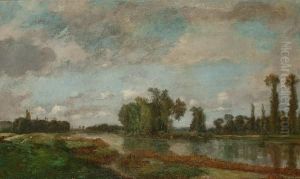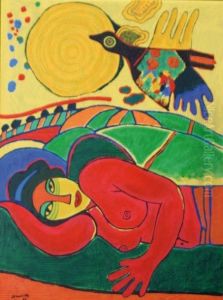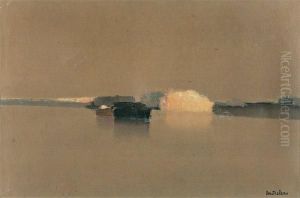Eugene-Pierre Estanave Paintings
Eugène-Pierre Estanave was a French artist known primarily for his work in printmaking and illustration. Born in 1860, Estanave embarked on his artistic journey at a time when Europe was experiencing a wave of innovation and change in the arts. Although not as widely recognized as some of his contemporaries, Estanave contributed to the artistic movements of his time, drawing upon the influences of Impressionism and the burgeoning Symbolist movement.
Estanave's early work was marked by a focus on landscapes and rural scenes, often capturing the idyllic countryside of France with a delicate and sensitive touch. He was skilled in etching and engraving, techniques that allowed him to express his vision with precision and subtlety. His prints often featured intricate details and a fine grasp of light and shadow, showcasing his technical prowess.
In the late 19th and early 20th centuries, Estanave's work began to shift towards the Symbolist movement, which was characterized by an interest in depicting not just the visible world but also the ideas, emotions, and dreams that lay beneath the surface. Estanave's Symbolist prints are imbued with a sense of mystery and often include allegorical or mythological elements. His work from this period reflects a deeper exploration of the human psyche and a fascination with the mystical aspects of life.
Despite his talents, Estanave remained relatively obscure compared to the leading artists of his time. Nonetheless, he enjoyed a measure of success and participated in various exhibitions, including the Salon des Artistes Français, where he received an honorable mention in 1889. His works were also exhibited at the Salon de la Société Nationale des Beaux-Arts.
Estanave's contribution to printmaking and illustration continued until his death in 1936. While he may not have achieved the fame of his peers, his oeuvre remains a testament to the rich and diverse landscape of French art at the turn of the century. Today, his prints and illustrations are valued by collectors and historians for their technical excellence and their evocative, dreamlike quality.



